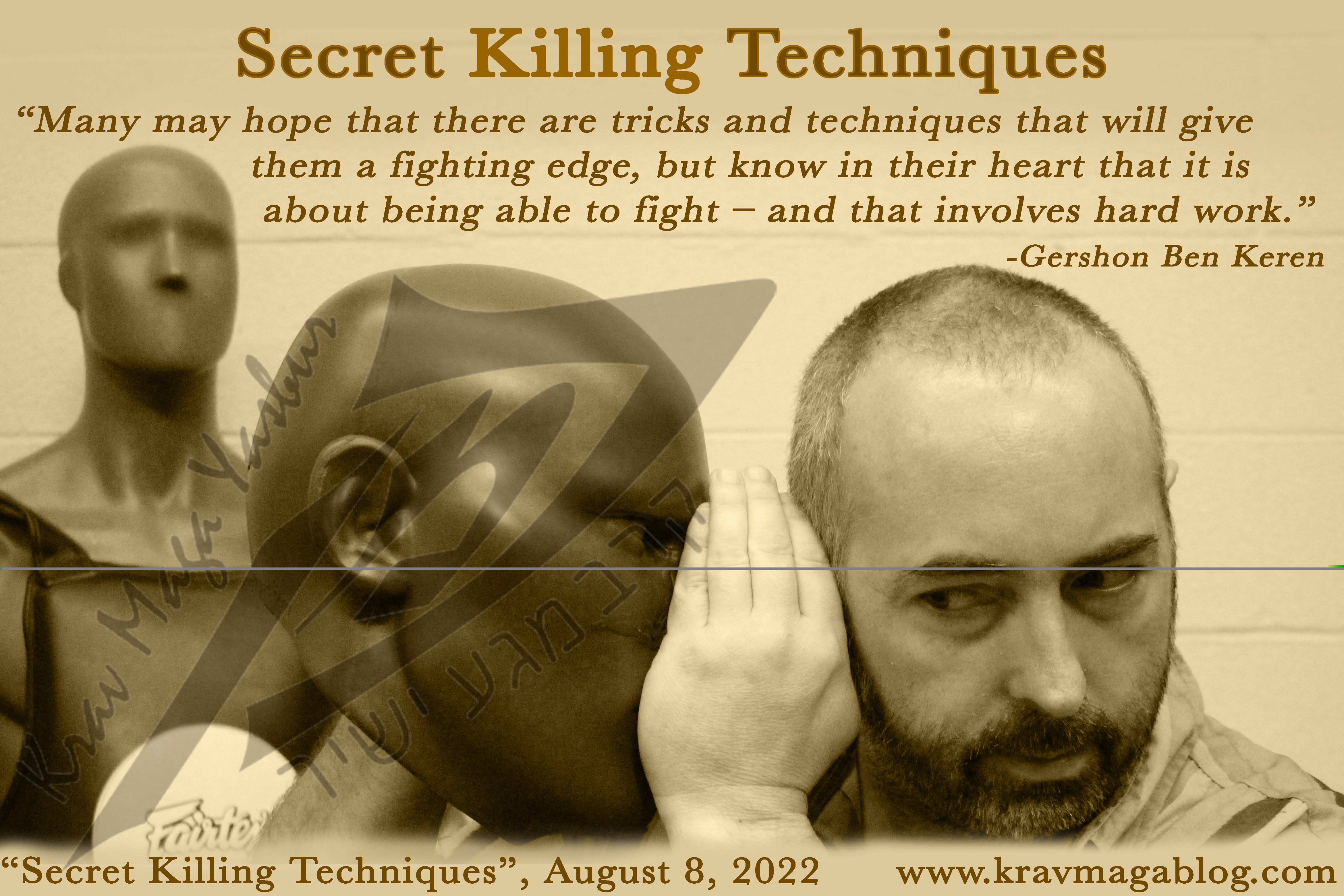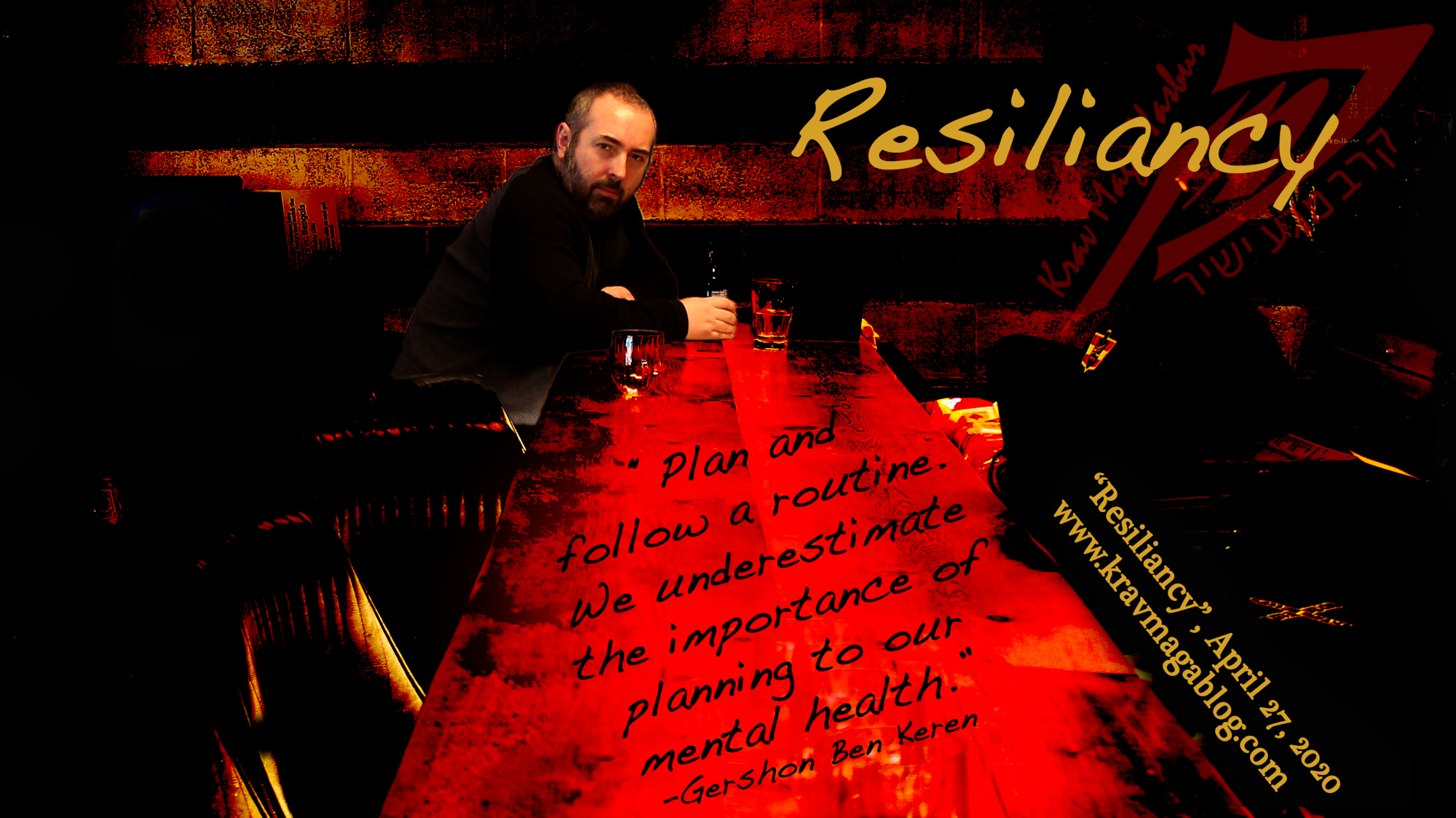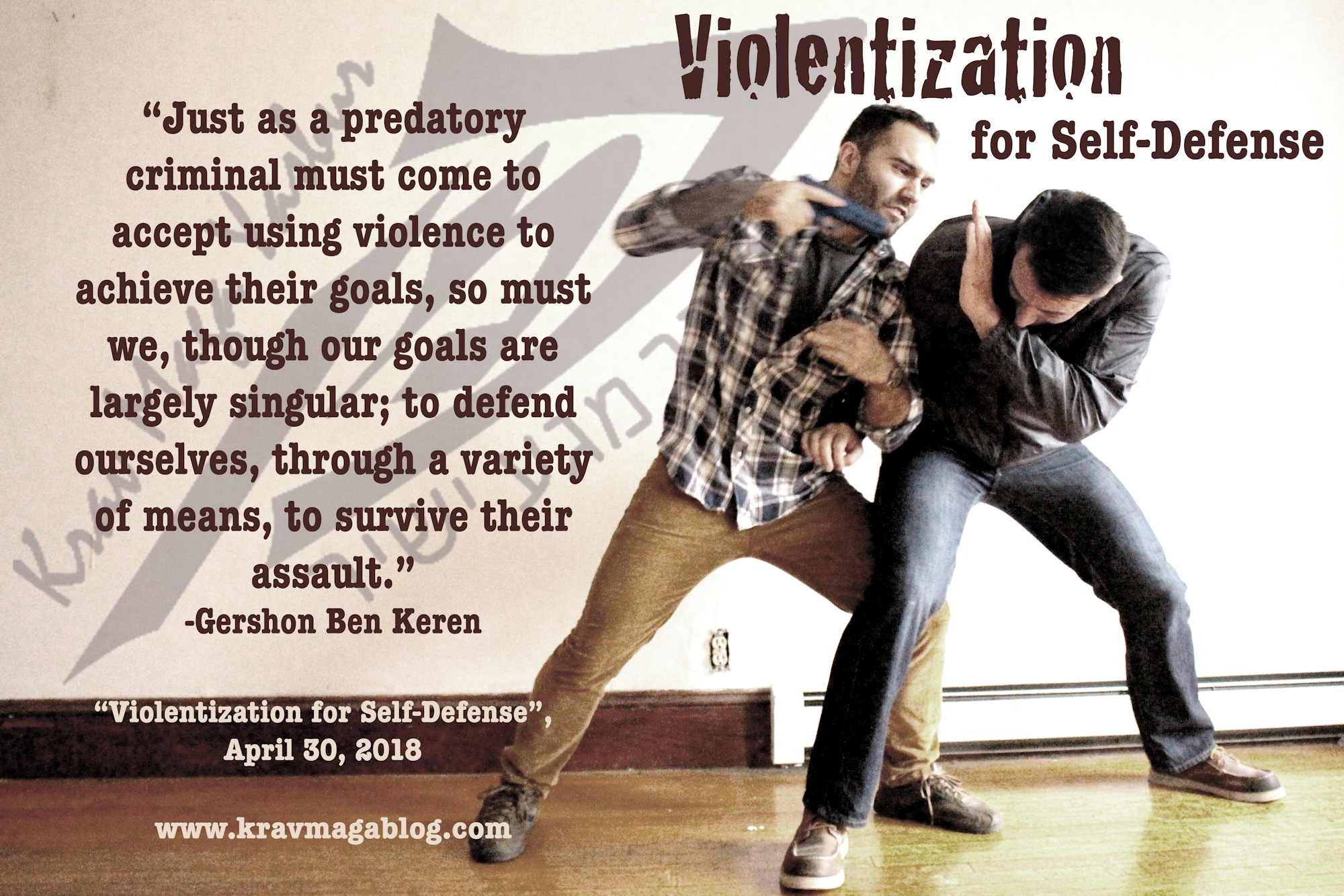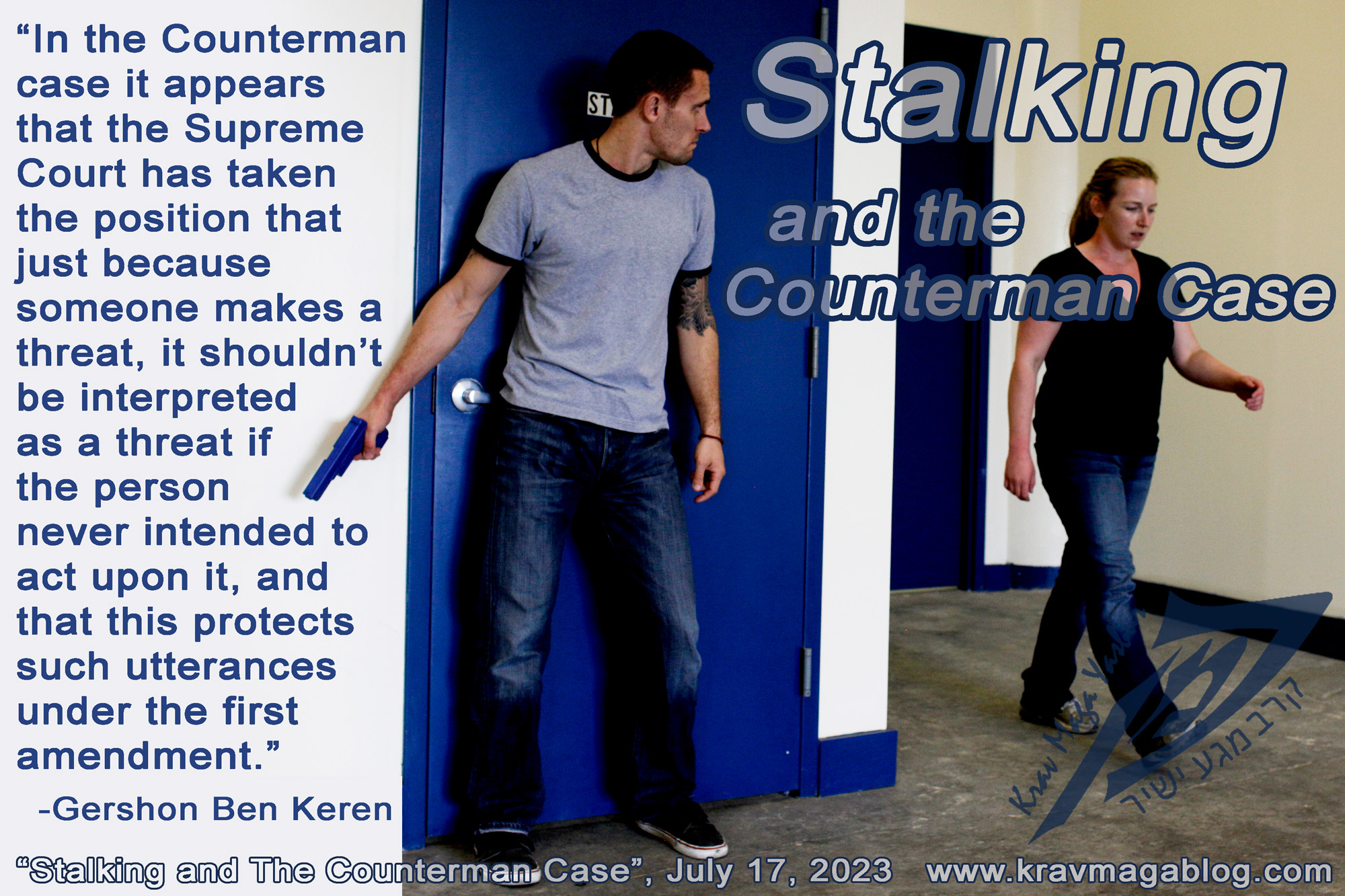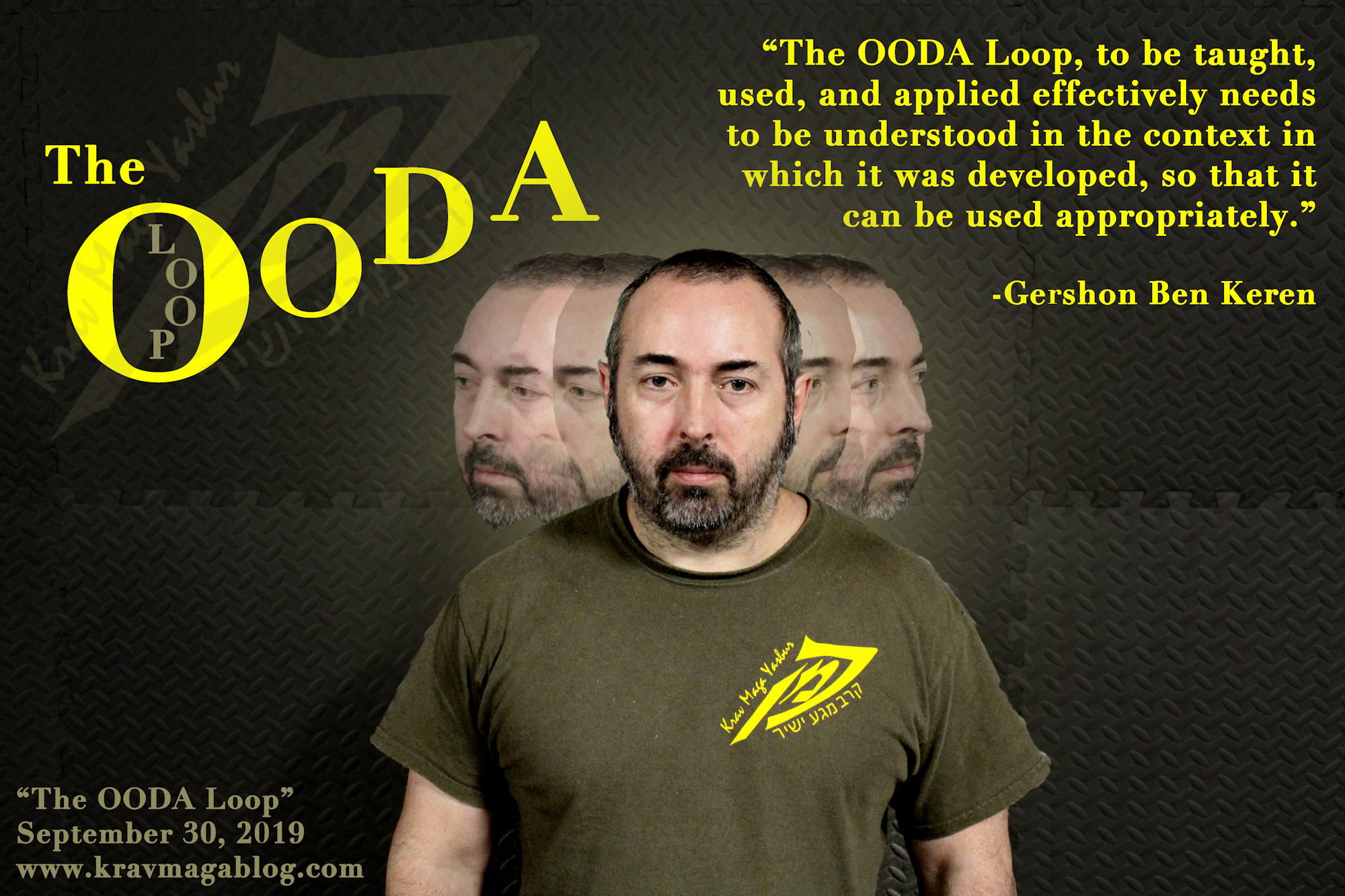The OODA Loop, is an article written by Gershon Ben Keren, a 5th Degree Black Belt in Krav Maga, who teaches Krav Maga in Boston, MA. He has also authored three Amazon best-Selling Books on Krav Maga.
There are certain ideas, principles, and concepts which get a lot of airtime in the reality-based self-defense world, but not a lot of actual analysis regarding how they work – or don’t work – such as the fight or flight response, and the OODA Loop. These terms are used extensively and sometimes out of context, so it warrants taking a moment to look at how and why they were developed, and for what practical purpose e.g. the fight or flight response was initially developed from observing how birds reacted to external dangers, such as other predatory animals; it didn’t look at intra-species dangers where members of the same species threatened one another – how birds fight amongst themselves. This doesn’t mean that the “fight or flight” response is null and void for our purposes, but rather there are contexts, and acts of social violence amongst humans, which may not neatly replicate this original observed behavior in another species. Equally, the OODA Loop, to be taught, used, and applied effectively needs to be understood in the context in which it was developed, so that it can be used appropriately. There is nothing in this article, which is revolutionary, or is breaking new ground, etc., and this is not its intention. Rather, the purpose of it, is for us to take a moment to look at a concept and remind ourselves what it is really attempting to teach and explain.
The OODA Loop was developed by Air Force Colonel John Boyd, in an attempt to explain a pilot’s thought processes when they were engaged in combat, and how it was possible to interrupt an enemy combatant’s decision-making in the heat of the moment. He put forward the idea that we make decisions in a loop-like fashion — that is, we observe something, we orientate ourselves regarding it, make a decision on what to do, and then act upon it: Observe, Orientate, Decide and Act (OODA). If any of the steps in this process were interrupted, by having to react and respond to something new, then the process would have to be restarted, as the new stimuli would have to now be factored into the process. Boyd wasn’t trying to come up with and present a new theory, he was trying in layman’s terms to present an overall idea that explains how we generally make decisions – and how by doing something unexpected and/or new, this process could be interrupted. As stated, nothing really revolutionary or disagreeable, however as it is an over-arching, umbrella idea concerning how we decide and act, it is worth looking at a few details, to make sure we don’t apply it incorrectly.
For several years, I competed in Judo at a relatively high level. I rarely consciously threw somebody, most of the time it was just something I did; I didn’t go through a thought-process, where I observed, I orientated, decided what to do and then acted. This all just happened for me. This thought process had been built into my throwing. If I’d had to consciously process things, it would have all been too slow. There were times I had to ask my coach what throw I had used, as I wasn’t fully aware of my actions in the moment. This is not because I was some type of super-athlete (I probably wouldn’t be sitting in Starbucks writing this blog if that was the case), but rather that once you’ve trained and practiced something enough you respond instinctually; the opportunity is recognized for you and you simply act. This doesn’t mean that the OODA Loop doesn’t apply here, but rather it’s something that happens subconsciously and is built into your actions. Other Judoka could interrupt it by feinting and making me respond in an “expected” way, by making a weight shift that would trigger me to respond with a certain throw, etc., but that happened subconsciously. Often the OODA Loop is described and explained as a purely conscious thought process, where people are “thinking” about their responses and weighing up their decisions, etc. This is not to say that in slow-moving situations this doesn’t happen, but in fast-moving and dynamic scenarios there is not enough time for this to happen, especially against a trained and experienced assailant.
Another thing to note is that not all “new” stimuli are equal. It is not enough to simply introduce anything new to interrupt this thought process, whether it is conscious or subconscious. As I became a more experienced competitor, I learnt to recognize what was a feint and what wasn’t; when a weight shift, a balance change was genuine, and when it was intended to provoke a specific response. Over time not all feints were treated equally – that’s not to say that they never worked, and that I never made mistakes, but rather that I became aware when somebody was trying to “sell” me something. It’s possible for people to block out, and learn to ignore certain stimuli, so that the OODA Loop isn’t interrupted – and an important one of these stimuli is “pain”. Oftentimes in reality-based self-defense conversations, inflicting pain is taught as a universal way of interrupting a person’s OODA Loop, however for certain people, and/or when in certain states, they’ve learnt to factor out this stimulus. This is why we must be adept at delivering different types of pain, and interrupting the loop in different ways, etc.
Boyd’s OODA Loop is a great way to explain in simple terms how people make decisions, however it should be recognized that most decisions are made subconsciously and so whatever we are trying to do to interrupt the loop, must occur at this level. If we are thinking about decisions and actions being made at a higher/conscious level, we may find ourselves operating too slowly, as we mirror these processes. By understanding that we will have to beat reaction times, part of the way we apply the OODA Loop in real-life situations is to slow things down, so that a conscious registration of events occur, and decision making is no longer instantaneous.
0 COMMENTS

